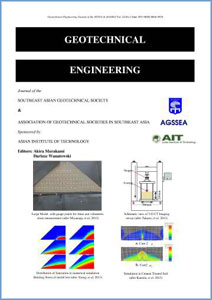Modelling viscous effects during and after construction in London Clay
Main Article Content
Abstract
A new approach to allow the modelling of the viscous behaviour of clay soils has recently been developed (Clarke & Hird, 2012) based on the BRICK constitutive model (Simpson, 1992). In this approach viscous effects, such as creep and stress relaxation, and the effects of strain history on soil stiffness are modelled within a single conceptual framework. The developed model, SRD (strain-rate dependent) BRICK, has been incorporated in a finite element program, allowing boundary value problems to be analysed. In this paper two case histories involving London Clay, where viscous effects possibly had an influence on the observed displacements, are back-analysed. These cases are the Jubilee Line extension at St James’s Park (Standing et al., 1996, Nyren et al., 2001) and a deep basement at Horseferry Road (May, 1975, Chapman, 1999). The results of the numerical modelling show that, in each case, the SRD BRICK model is able to achieve closer agreement with the recorded displacements when compared with the unmodified BRICK model.
Article Details

This work is licensed under a Creative Commons Attribution-NonCommercial-NoDerivatives 4.0 International License.
Copyright © 2019 Association of Geotechnical Societies in Southeast Asia (AGSSEA) - Southeast Asian Geotechnical Society (SEAGS).


